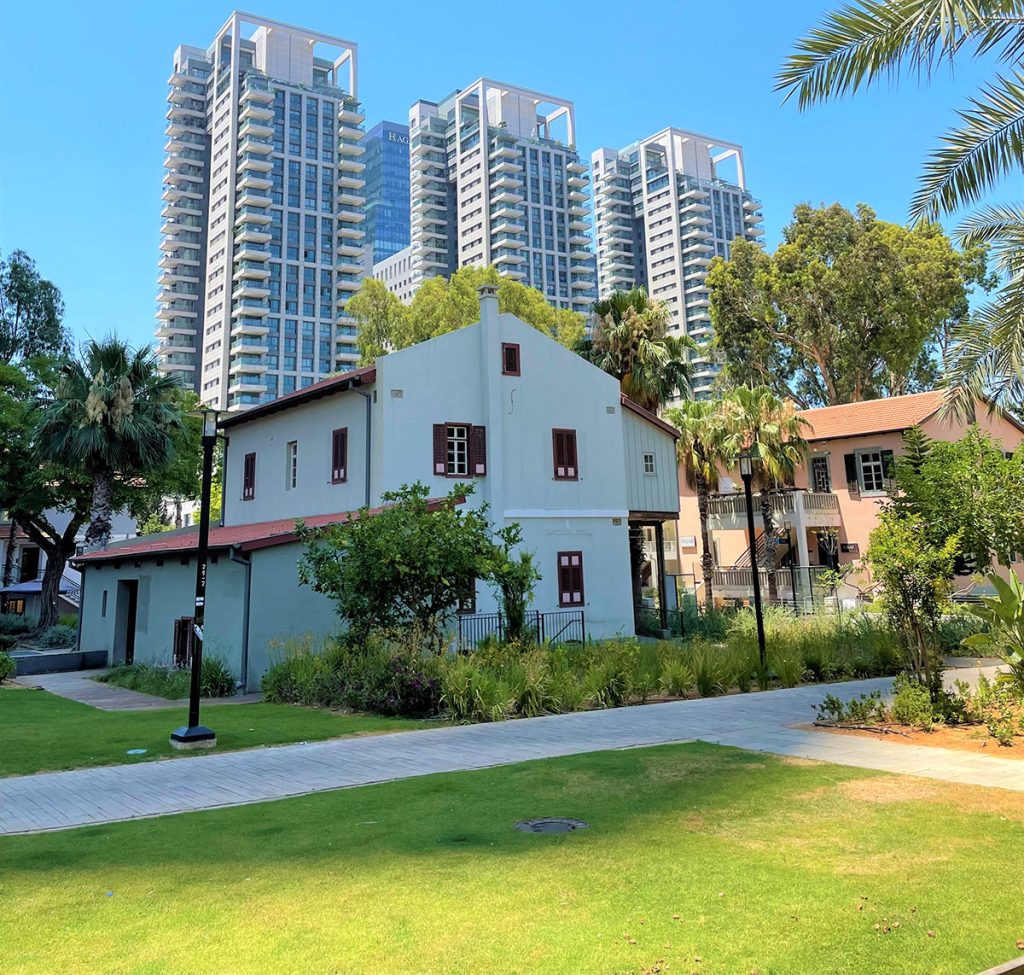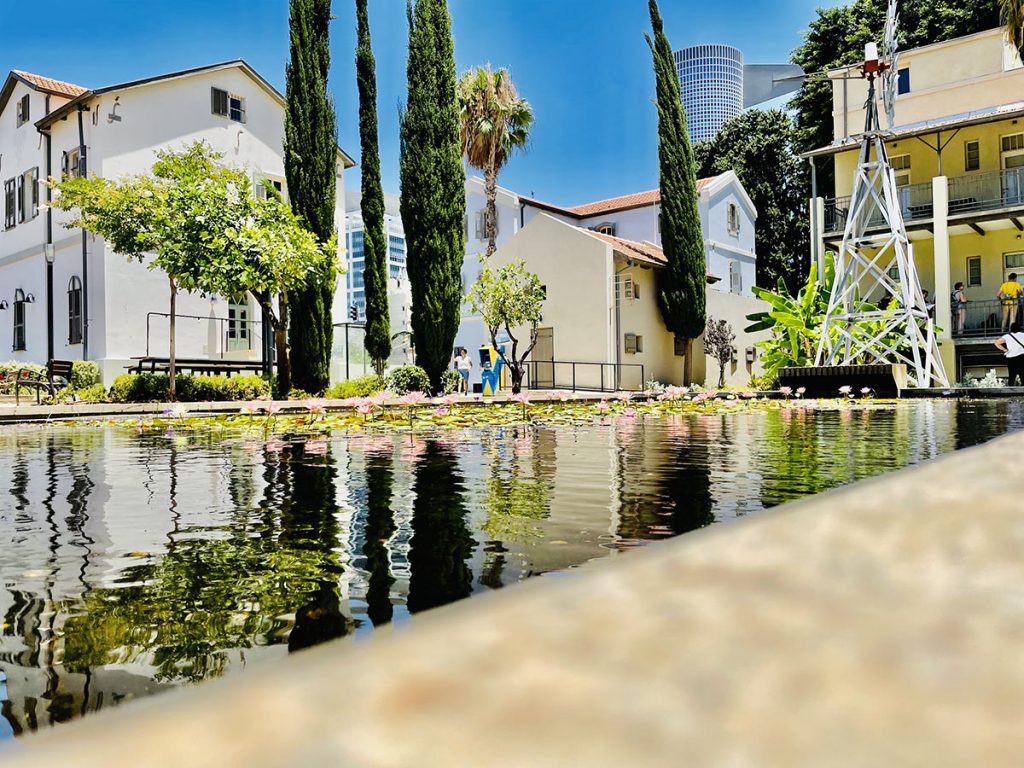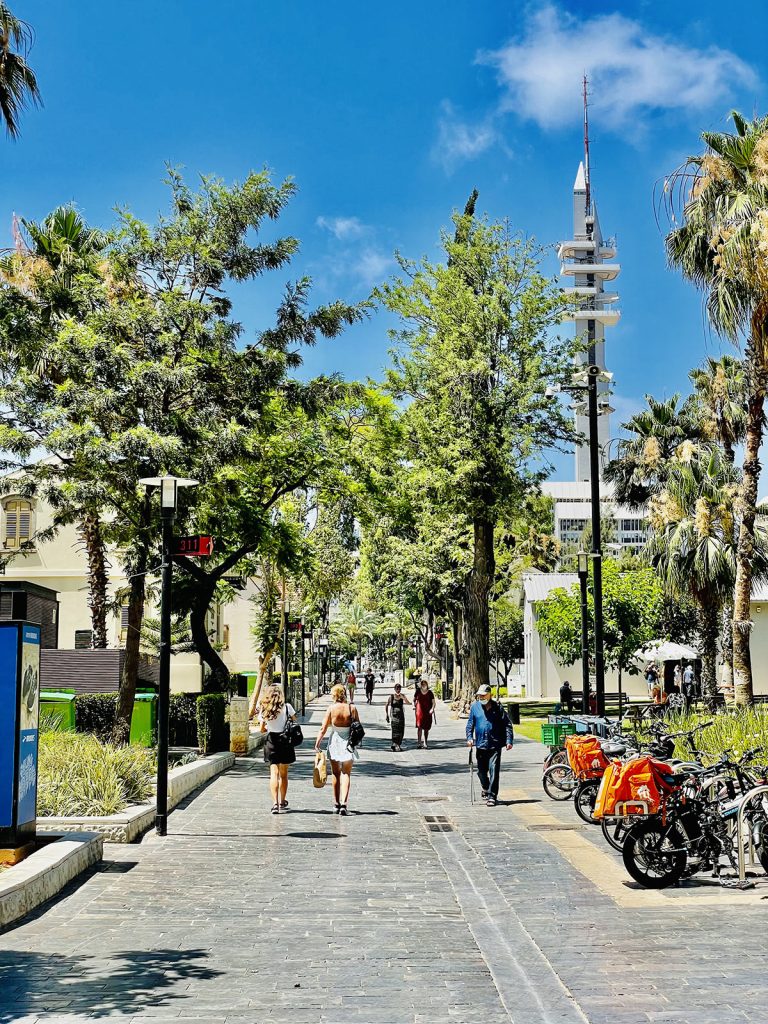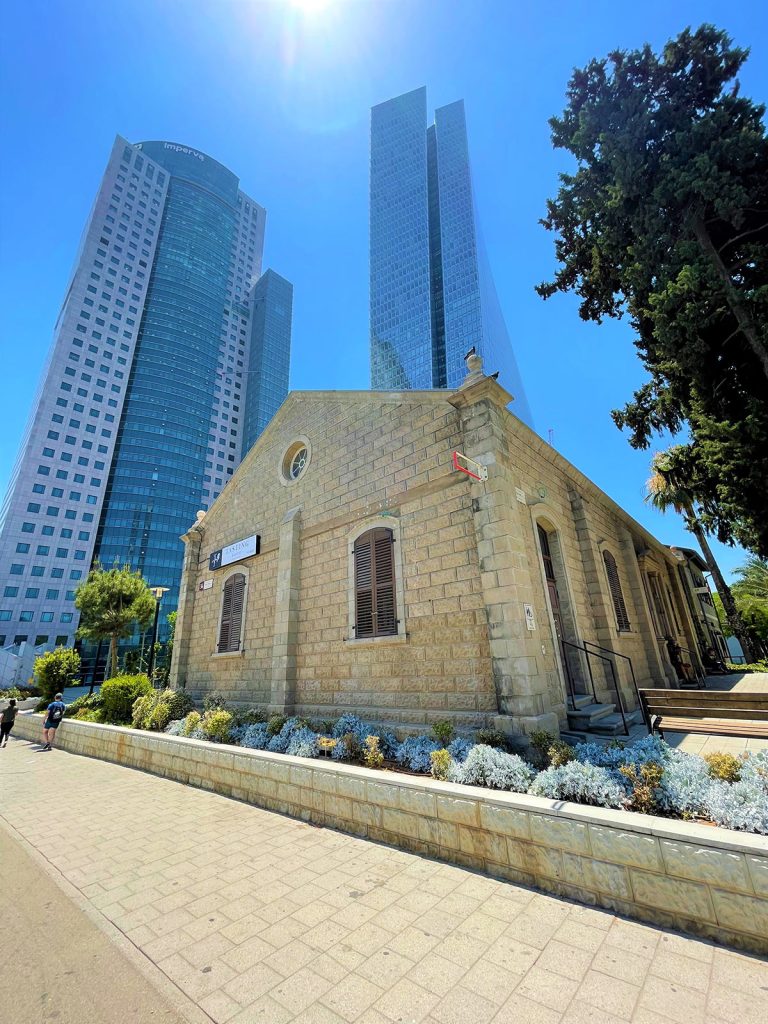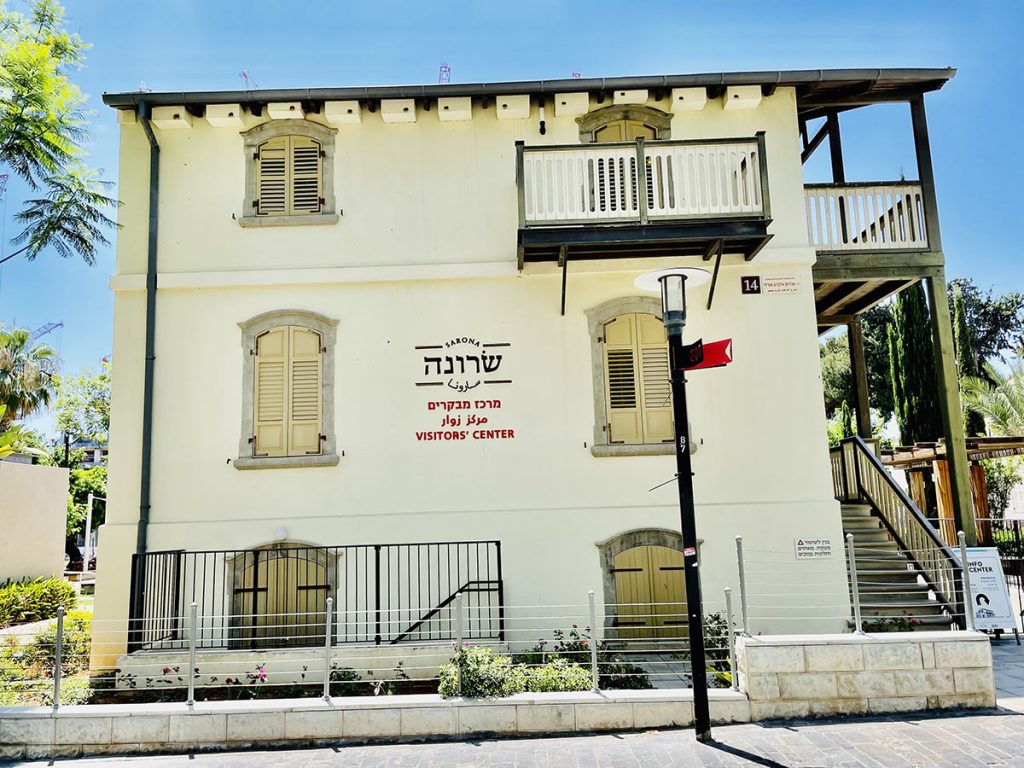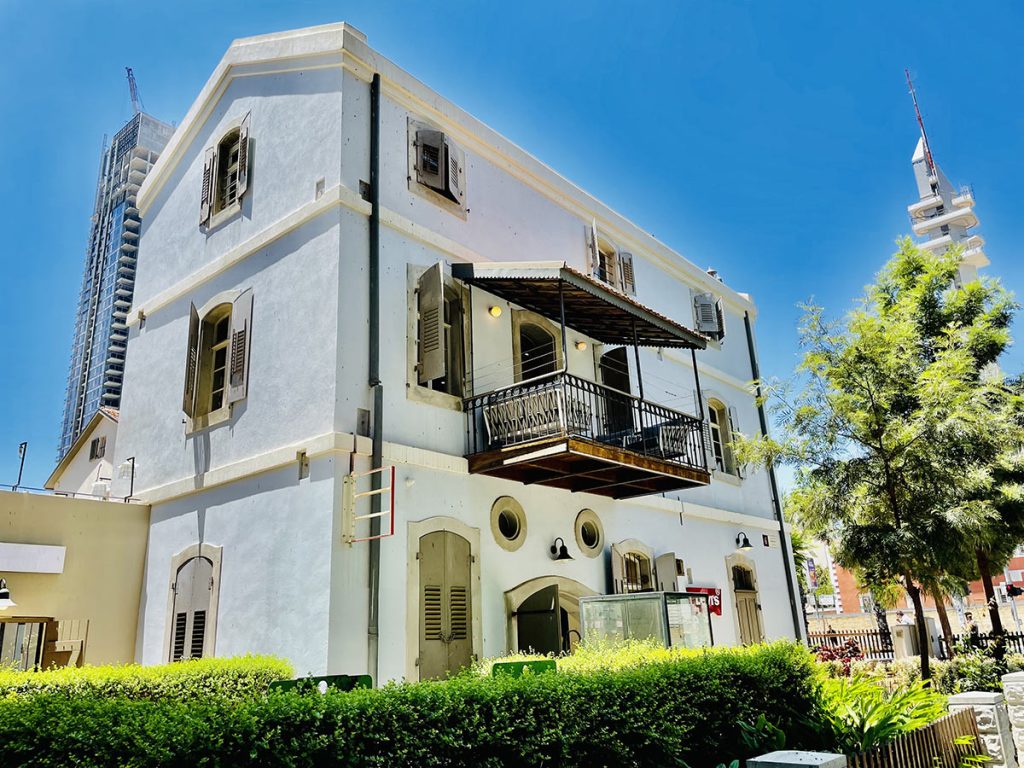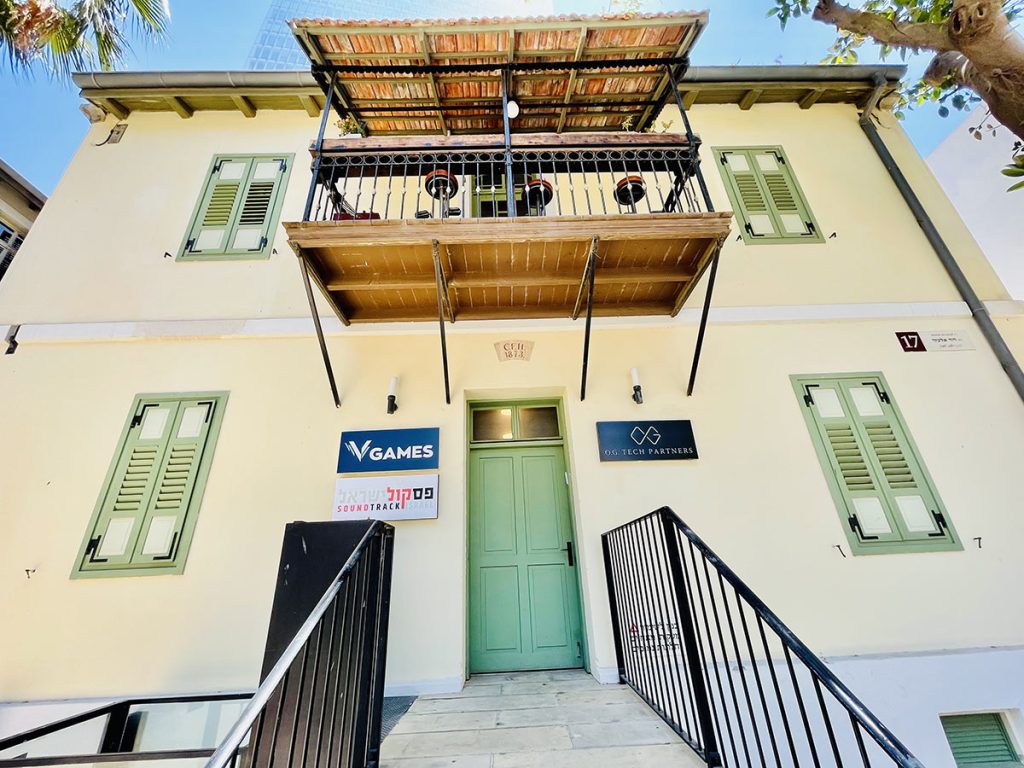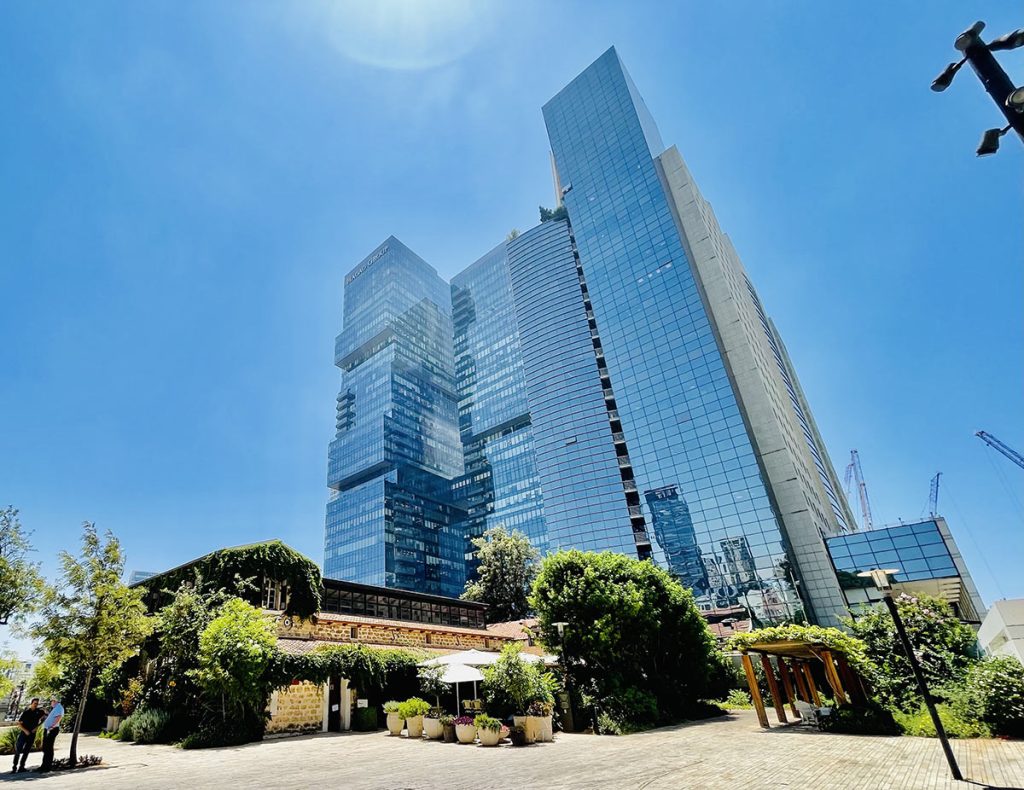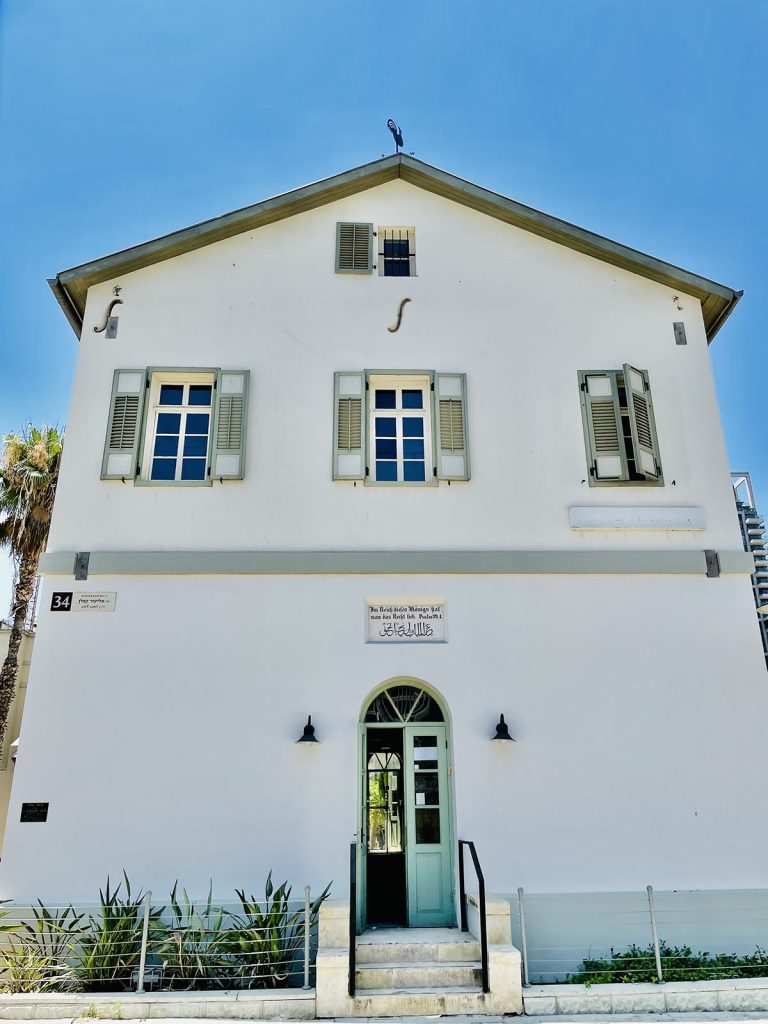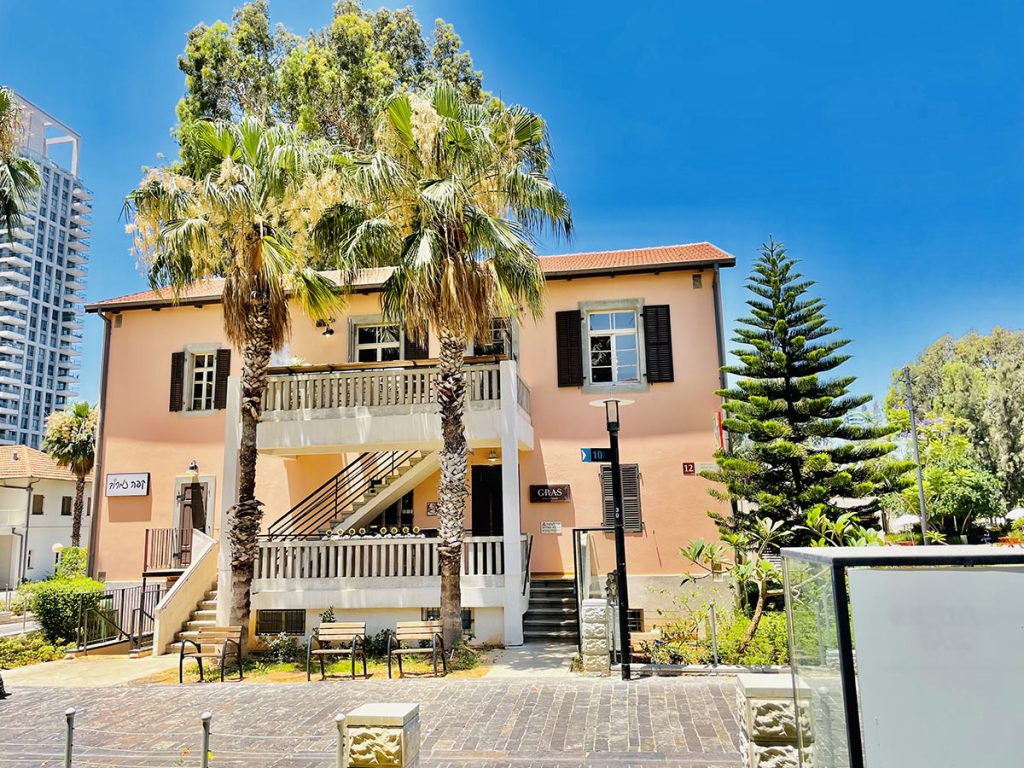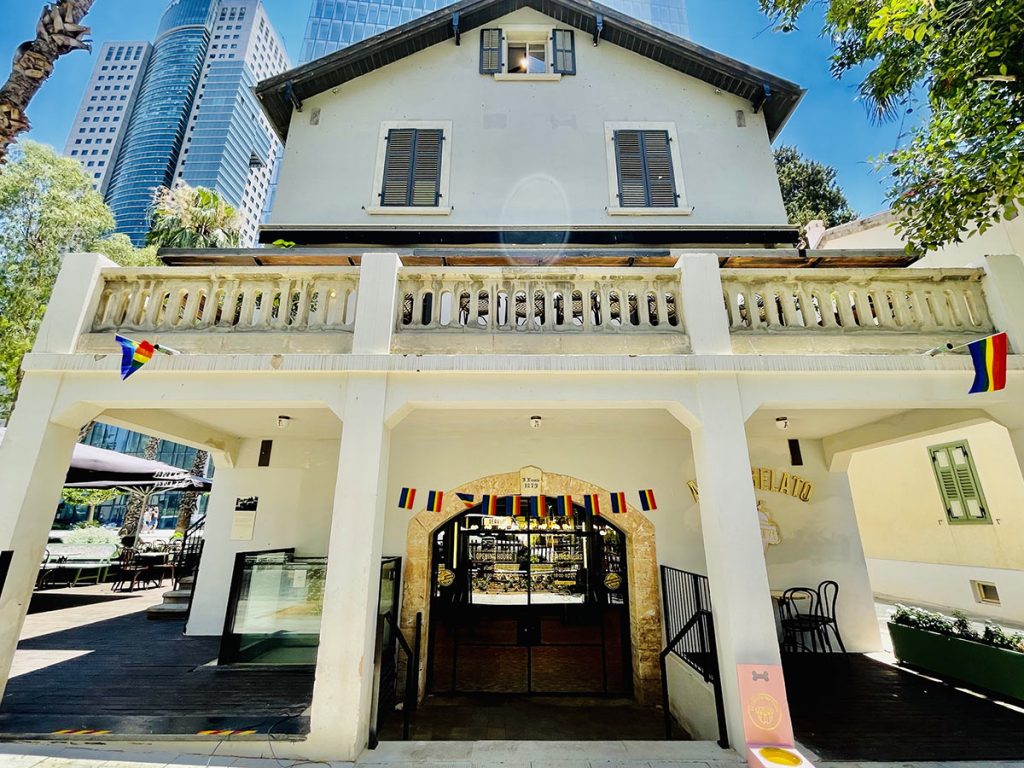Another great reason to come and check out Sarona Market is the Sarona Colony which is now a trendy commercial area called Sarona Tel Aviv. Now Sarona Colony was one of the first modern agricultural settlements in Palestine and became a model for the Jewish pioneers. In August 1871, the Templers purchased 60 hectares of land from a Greek monastery north of Jaffa. Part of the Plains of Sharon (after which it was named); near the River Yarkon, was four kilometers from Jaffa.
A Little More About Sarona Colony
So the houses, designed by architect Jacob Schumacher, were built of stone, with red-shingled roofs. Instead of the flat or domed roofs common in the region. Hard work, the harsh climate and epidemics claimed the lives of many before the colony became self-sustaining. Hardegg stayed in Haifa, while Hoffmann moved on to establish other colonies like Sarona. Hoffman established colonies in Jaffa a year later, and two years later, in 1871, a third colony in Sarona, as the Templers’ first agricultural colony, on the road from Jaffa to Nablus.
So in October 1871, the foundation stones were laid for the first houses. First, extreme hardship and disease took a heavy toll on human life during the first few years. Also, Malaria caused the deaths of 28 of the 125 settlers of Sarona in 1872 alone. In an effort to dry the marshy land, 1,300 eucalyptus trees were planted.
By 1889, 269 people lived in Sarona. There were 41 homes, a communal hall, a winery, workshops, barns, and sheds. The Sarona colonists brought modern farming tools and practices to the Holy Land. They focused on crops and products they could readily sell. This “agriculture-for-profit” was an economic innovation in a land that for centuries had practiced only self-sustaining farming. Grain crops and dairy industry first, then orchards and vineyards were planted.
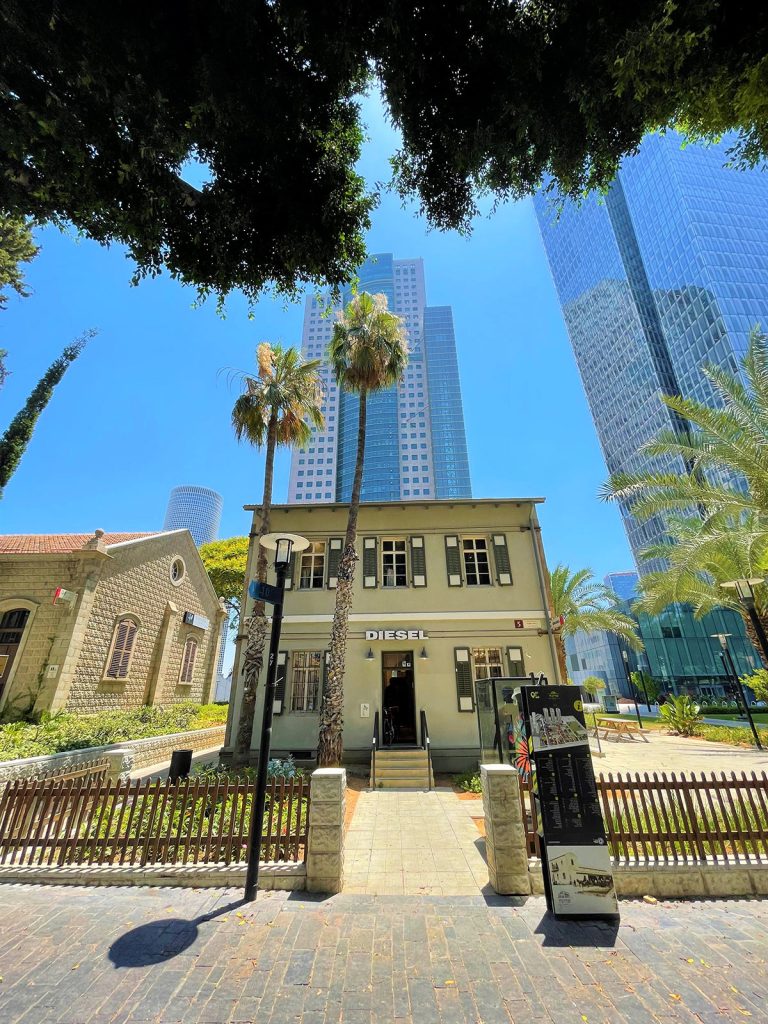
COOL SHOPS THAT WORTH CHECKING OUT WHILE ABSORBING SOME HISTORY
First Successes
In 1895, the colony had seven gardens tended by hired laborers who received one-third of the earnings. Also, a large winery was opened, and wines were marketed in Germany. As the dairy farm expanded, milk, cheese, butter, and meat were sold in Jaffa. Later, when Jewish wineries began to pose strong competition, the colonists of Sarona replanted their vineyards with citrus.
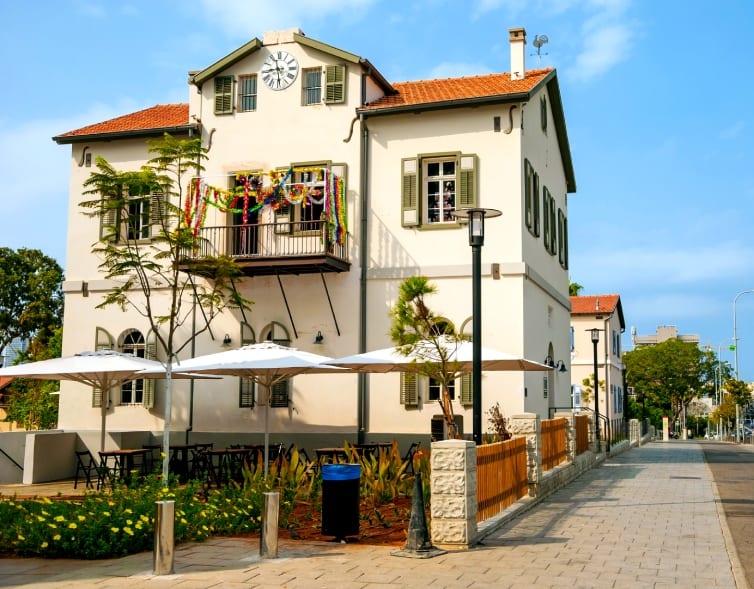
TRENDY RESTAURANTS AND BARS JUST OUTSIDE SARONA MARKET
Faced with a shortage of financial resources for infrastructure development, the community introduced Frondienst, a compulsory work system where every male member was required to do a certain number of hours of community work each month. The building of roads, development of land, roads and drainage, and community facilities could thus be scheduled.
Sarona Colony: Who Were the Templers?
Namely, The Temple Society (German: Tempelgesellschaft) is a German Protestant sect with roots in the Pietist movement of the Lutheran Church. For this reason, members refer to themselves as Templers. Eventually, the Templers were expelled from the Lutheran Church in 1858 because of their millenarian beliefs. Their aim was to realize the apocalyptic visions of the prophets of Israel in the Holy Land. One of its founders was Christopher Hoffman. The failure of his efforts to create a better Christian State in Germany through politics caused him to return to the roots of Christianity as expressed by Jesus. So he became convinced that Jesus had called for a radical change of attitude in people. The better state of being after such a change of attitude he saw as the Kingdom of God, which was to be established.
Hoffmann dedicated his life to collecting people striving for such a “kingdom” and setting up communities in which their striving would express itself in daily life. Initially (1854) known as the Friends of Jerusalem, the group in June 1861 formed itself into an independent Christian religious organization known as Deutscher Tempel. Its members identified themselves as Templers. In 1868 the Templers started to create settlements in Palestine.
Early settlement in Palestine
Hoffmann and the co-leader Hardegg purchased land at the foot of Mount Carmel and established a colony there in 1868. At the time, Haifa had a population of 4,000. The Templers are credited today with promoting the development of the city. The colonists built an attractive main street that was much admired by the locals. It was 30 meters wide and planted with trees on both sides.
Sarona Colony: The Old Community Hall
Now usually, this is where I like to start my private tours. Since this is the ideal spot to give some kind of an introduction to the Templers, who were they and add some preliminary background about the period. During the tour, I also like to compare the Zionist movement and the Tepmlers. Since there are some similarities between the two. But yet only one prevailed while the other failed.
The old community hall, which was inaugurated in the winter of 1873, was the first public building in the Templer colony. On its rooftop, bells and a large clock were installed. And the walls were adorned with scripture. The building was used for community gatherings until 1911, when the new community Hall was built (the building at 3 David Elazar St.); until 1931, it housed the colony’s school.
In the 1930s, the local council offices of Sarona were housed there, as was a post office. During World War II, the headquarters of the British forces was there. After the handover of Sarona to the Haganah. The building was named ‘Carmi House’ in memory of Carmi Rabinovich, who died in a battle in Holon during the War of Independence. After the founding of the State, the Israel Philatelic Service was housed here and the post office of the Kiryah until its closure in 2005, when it was moved to its current location in the context of the preservation project.
The Gottlob Graza House
The Graza family home was built in the first period of construction in Sarona in the 1870s. Now over the years, the residence was enlarged; and a stable was added to it. In fact, on the ground floor, on the side facing the street, Gottlob Graza opened a Blacksmith workshop. At that workshop, he repaired the tools and wagons of the Sarona peasant, and did the horseshoe replacement for the residents’ horses. Cornelia, his wife, ran the kindergarten near the community home. In early 1948, the building served as the headquarters of one of the Palmach battalions that fought for opening the way to the besieged Jerusalem.
Christian Friedrich Hecker House
Christian Friedrich Haecker’s house was built in 1873 and his ownership is indicated with the initials of his name just above the entry door. Later, the teacher Emmanuel Knoll lived in the house. After the War of Independence the structure was used by the Ministry of Welfare and later the IDF used it for the Teleprocessing Corps.
Sarona Colony: The Winery
The production of wine was the main agricultural enterprise in Sarona until the beginning of the 20th century. The wine industry began on the properties of the vintners. With the expansion of the vineyards, a new, large winery was built in its place in 1891-1892 which dramatically enlarged Sarona’s wine production. The wine was stored in wood barrels in the cellars of the winery.
During the War of Independence, in January 1948, 20 old Auster aircraft (‘Primus’) which were acquired from the British Air Force were transferred to the winery in a secret operation; 15 of them were assembled for flight. Here the foundations were laid for the Israeli Air Force Technical Formation and these aircraft were its primary strength at the beginning of the War of Independence. After the founding of the State, two of the winery buildings were used as the Government Printer, and after the 1960s they were used as the publisher of the Ministry of Defense.
Karl Steller House
The house of Karl Steller was built in several stages before World War I. Steller owned an orchard and ran one of the biggest dairies in the colony. After World War II, he played a central role in negotiations over the sale of Sarona’s land to the Tel Aviv Municipality, which was finalized in 1948. After the departure of British forces from the Sarona camp in December 1947, the personnel of the civil defense forces was housed here. The house was moved from its original location in 2005.
Samuel Weller House
First, the Weller house was built as a single-story home. Then at the beginning of the 1930s, the width and height of the house were expanded according to a plan of the architect Theo Wieland. A second story was added, as were concrete floors; a sun porch, concrete stairs, and a rooftop floor.
Then in December 1947, after the British camp in Sarona was transferred to Jewish hands, the Israel Defense Force was located here. Until the house was vacated in 2000, it was used by the construction unit of the Ministry of Defense. Ultimately, the house was moved from its original location in 2005 as part of the preservation project.
Johannes Lemle House
Now this was the home of Johannes and Pauline Laemmle. First, Laemmle was a gardener and landscape designer in Sarona and a founder of the colony. After the establishment of the State, the Ministry of Welfare was housed here. In the 1960s the army magazine ‘Bamachaneh Nahal’ operated in the house and its rooms were utilized by the Prime Minister’s Office.
So that’s it for now. For a full tour of Sarona, I do invite you to contact me. And I’ll be happy to take you around as a part of a one-day private tour of Tel Aviv. In fact, we can make the tour lots of fun by combining some stops and try some of the local restaurants here. And where the winery used to be; now there is a pub with a huge selection of wines from Israel and foreign wine as well. So don’t think about it and try Arik private tours in Israel.
